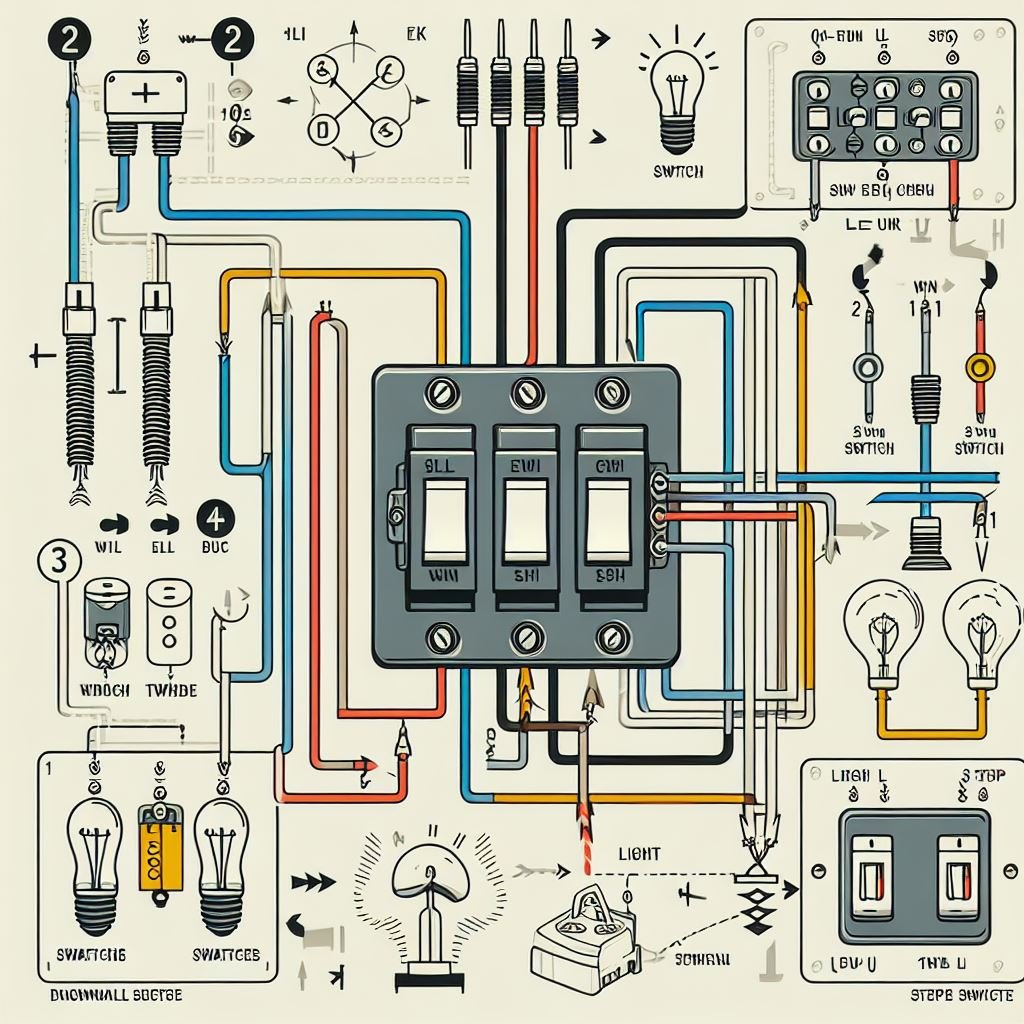A Diagram For Three-Way Switch is a type of electrical switch that allows you to control a light or other electrical device from two different locations. This type of switch is commonly used in stairways, hallways, and large rooms with multiple entrances.
If you’re planning to install a three-way switch in your home, it’s important to understand the wiring and connections involved. In this article, we’ll provide a detailed diagram for wiring a three-way switch and explain the process step by step.
Why Use a Diagram For Three-Way Switch?
Before we dive into the wiring diagram, let’s first understand why a three-way switch is useful.
A three-way switch allows you to control a light or other electrical device from two different locations. This means you can turn the light on or off from either location, making it convenient for large rooms or areas with multiple entrances.
For example, if you have a three-way switch at the top and bottom of a staircase, you can turn the lights on or off from either location. This eliminates the need to go back and forth to the same switch, saving time and effort.
Diagram for Wiring a Three-Way Switch
The diagram above shows the basic wiring for a three-way switch. Before we get into the details, let’s first understand the different components involved.
Components of a Three-Way Switch
- Switches: A three-way switch has three terminals, one for the hot wire and two for the traveler wires. These switches can be either single-pole or double-pole, depending on the type of circuit you’re working with.
- Hot Wire: The hot wire is the wire that carries the electrical current from the power source to the switch. It is typically black.
- Traveler Wires: The traveler wires are the wires that connect the two switches. These wires are typically red.
- Ground Wire: The ground wire is a safety wire that connects to the metal casing of the switch. It is typically green or bare copper in color.
- Neutral Wire: The neutral wire is the return path for the electrical current. It is typically white.
Step-by-Step Wiring Process
Now that we understand the components, let’s go through the wiring process step by step.
Step 1: Turn Off the Power
Before you start working on any electrical wiring, it’s important to turn off the power to the circuit you’ll be working on. This will prevent any accidents or injuries.
Step 2: Identify the Hot Wire
The first step in wiring a three-way switch is to identify the hot wire. This is the wire that carries the electrical current from the power source to the switch. You can use a voltage tester to identify the hot wire.
Step 3: Connect the Hot Wire to the Common Terminal
Once you’ve identified the hot wire, connect it to the common terminal of the first switch. The common terminal is typically labeled with a dark-colored screw.
Step 4: Connect the Traveler Wires
Next, connect the two traveler wires to the remaining terminals of the first switch. These terminals are typically labeled with brass-colored screws.
Step 5: Connect the Traveler Wires to the Second Switch
Now, connect the traveler wires to the second switch. The traveler wires should be connected to the same terminals as the first switch.
Step 6: Connect the Hot Wire to the Common Terminal of the Second Switch
Finally, connect the hot wire to the common terminal of the second switch. This will complete the circuit and allow you to control the light or electrical device from both switches.
Tips for Wiring a Three-Way Switch
- Always turn off the power before working on any electrical wiring.
- Use a voltage tester to identify the hot wire.
- Make sure all connections are secure and tight.
- Use wire nuts to connect wires.
- Label the wires before disconnecting them to make reconnection easier.
- If you’re unsure about any step, consult a professional electrician.
Common Mistakes to Avoid
Wiring a three-way switch can be tricky, and there are a few common mistakes that people make. Here are some mistakes to avoid when wiring a three-way switch:
- Incorrectly identifying the hot wire: If you connect the hot wire to the wrong terminal, the switch won’t work. Make sure to use a voltage tester to identify the hot wire before connecting it to the common terminal.
- Not using wire nuts: Wire nuts are essential for securing wires together. If you don’t use wire nuts, the wires can come loose and cause a short circuit.
- Not labeling wires: Before disconnecting any wires, make sure to label them so you know which wire goes where when reconnecting them.
- Not turning off the power: Working on live wires can be dangerous and can cause serious injuries. Always turn off the power before working on any electrical wiring.
Conclusion
A Diagram For Three-Way Switch is a useful addition to any home, providing convenience and ease of use. By following the wiring diagram and tips provided in this article, you can successfully wire a three-way switch in your home. Remember to always turn off the power and consult a professional if you’re unsure about any step. With the right knowledge and precautions, you can safely and effectively install a three-way switch in your home.
For More Topics, Visit- Evlwendz.com







